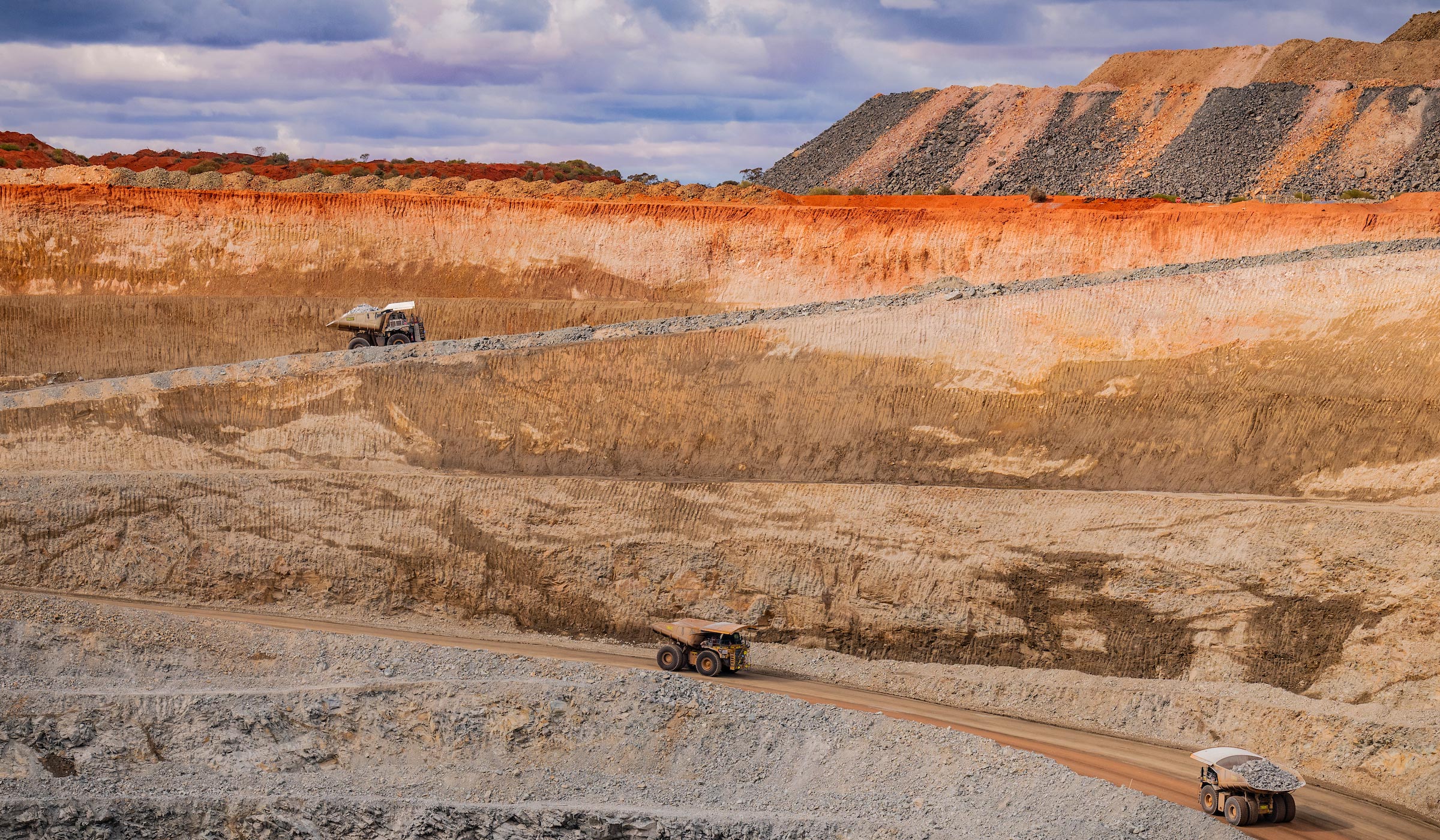Gold mining has a positive impact on local communities, contributing to their development in various ways. This precious metal is not only a symbol of wealth, but it also has the power to transform communities by creating job opportunities, improving infrastructure, supporting social and educational programs, promoting environmental sustainability, preserving cultural heritage, and empowering individuals.
This article will explore the ways in which gold mining promotes community development and addresses concerns about its impact on local communities.
We will discuss the economic, social, cultural, and environmental benefits of this industry and the steps taken by responsible mining companies to ensure the well-being of communities living near gold mining operations.
Job Creation and Economic Growth
Gold mining has a significant impact on job creation and economic growth in local communities. The industry provides employment opportunities directly through mining operations and indirectly through supplier businesses that support mining activities. As a result, gold mines are often a driving force behind economic growth in many regions.

According to the World Gold Council, gold mining is responsible for the employment of over 3 million people worldwide, with a further 10-15 million people indirectly supported by the industry.
Job Creation
Gold mining creates jobs across a wide range of sectors, from engineering and construction to finance and administration. These jobs are often well-paying and provide opportunities for career growth and skills development.
One study by the National Bureau of Economic Research found that mining jobs are associated with higher wages and lower unemployment rates compared to other industries in the same region.
Furthermore, the nature of gold mining means that it often occurs in rural or remote areas with limited job opportunities. As such, gold mines can provide vital employment and economic opportunities for people living in these areas.
Economic Growth
Gold mining can also stimulate economic growth in communities through the creation of new businesses and the generation of revenue for local governments.
Many gold mines invest in community infrastructure projects, such as roads, schools, and healthcare facilities, which can improve the overall economic and social well-being of the community.
Additionally, gold mining can lead to increased tourism as visitors are drawn to the region to learn about the industry and its history. This can provide further economic benefits for the community, such as the creation of small businesses and the generation of revenue from tourism-related activities.
Overall, gold mining has a significant impact on job creation and economic growth in local communities. The industry provides vital employment opportunities and supports the development of businesses and infrastructure, contributing to the overall well-being of the community.
Infrastructure Development
One of the most significant ways in which gold mining contributes to community development is through funding infrastructure projects. The revenue generated from gold mining is often used to build and improve community infrastructure such as roads, schools, and healthcare facilities. These projects not only benefit the community but also strengthen the local economy by creating jobs and stimulating economic growth.
Infrastructure development projects are often financed and implemented by gold mining companies in collaboration with local authorities and community members. The involvement of the community in decision-making and project implementation ensures that infrastructure projects are tailored to meet the specific needs of the community.
| Examples of gold-funded infrastructure projects: |
|---|
| Construction of roads and bridges |
| Building and renovation of schools and educational facilities |
| Installation of water and sanitation systems |
| Upgrading and construction of healthcare facilities |
The benefits of infrastructure development go beyond immediate improvements in community life. Investment in infrastructure can provide long-term benefits by improving access to education, healthcare, and other basic services. Improved infrastructure can also attract new businesses and investment opportunities, creating a more resilient and sustainable local economy.
Real-life Example: Yanacocha Gold Mine, Peru
“Yanacocha is committed to supporting the region’s development by investing in vital infrastructure and community development programs. Over the past two decades, Yanacocha has invested over $800 million in the region towards education, healthcare, water supply, road infrastructure, and agricultural development, among other initiatives.”- Yanacocha Gold Mine
Social and Educational Programs
Gold mining companies often take the initiative to support social and educational programs in local communities, contributing to social development and empowering individuals.
Through initiatives like community service, skills training, and education funding, gold mining companies promote social development in various ways. These programs not only benefit the community, but also enhance the welfare of employees and their families.
Community Initiatives
Gold mining companies frequently engage in community initiatives such as volunteering, fundraising, and donating goods and services. These efforts promote a sense of community, as well as foster trust and mutual respect between the company and the local population.
These initiatives often involve partnerships with local organizations, including schools, hospitals, and non-profits. By working together with these organizations, gold mining companies can provide valuable resources to the community and help address important issues.
Educational Programs
Education is a critical component of social development, and gold mining companies recognize the importance of investing in education in the communities where they operate. Educational programs can take many different forms, including scholarships, teacher training, and curriculum development.
By promoting education, gold mining companies can help increase literacy rates and improve job opportunities for members of the community. This can in turn lead to increased economic development and a higher standard of living.
“Education is the most powerful weapon which you can use to change the world.” – Nelson Mandela
Gold mining companies also recognize the importance of science, technology, engineering, and mathematics (STEM) education. Many companies offer STEM-related programs that focus on preparing students for careers in the mining industry.
These programs are valuable not only for students, but also for the industry as a whole, as they help build a pipeline of skilled workers and promote innovation and growth.
Environmental Sustainability
The gold mining industry is committed to responsible mining practices that minimize environmental impact and promote sustainability. This includes ongoing efforts to implement and maintain stringent environmental management systems that meet or exceed regulatory requirements.
Through these sustainable practices, the industry aims to protect the natural environment and biodiversity, minimize water consumption, and reduce greenhouse gas emissions. Gold mining companies also work to ensure that their operations do not negatively impact neighboring communities or the environment they depend on.
Responsible Mining Practices
Responsible mining practices are essential to ensuring environmental sustainability. This includes implementing rigorous waste management and reclamation plans, monitoring air and water quality, and reducing energy consumption through the use of efficient technologies.
The industry also invests in research and development to identify new technologies and processes that minimize environmental impact and improve efficiency.
Environmental Protection
Gold mining companies are committed to minimizing the impact of their operations on the environment, including the surrounding wildlife and biodiversity.
One important aspect of environmental protection is land reclamation, which involves restoring disturbed land to its original state once mining operations have ceased. Reclamation efforts can include replanting vegetation, restoring waterways, and rehabilitating wildlife habitats.
Sustainable Practices
Sustainability is a key consideration for gold mining companies, who work to ensure that their operations minimize waste and energy consumption while maximizing efficiency.
Many companies invest in renewable energy sources and promote the use of alternative fuels to reduce their carbon footprint. They also work to minimize water consumption and manage the disposal of hazardous materials in an environmentally responsible manner.
“We take our environmental responsibilities very seriously and are committed to operating in a manner that is sustainable and protects the environment for future generations.” – Gold Mining Company Representative
Indigenous Communities and Cultural Preservation
Gold mining can have a significant impact on indigenous communities and their cultural heritage. Many mining companies recognize this and take steps to preserve the cultural heritage of these communities while also promoting mutual respect.
For example, the Porgera Joint Venture (PJV) in Papua New Guinea has a dedicated team that works with local communities to identify and preserve cultural heritage sites. The company also provides opportunities for indigenous people to participate in decision-making processes that affect their communities.
Preserving Cultural Heritage
Gold mining can threaten the cultural heritage of indigenous communities by damaging sacred sites or disrupting traditional practices. Responsible mining companies take steps to prevent this by working closely with indigenous groups to identify and preserve cultural heritage sites.
For example, at the Yanacocha mine in Peru, the company worked with the local community to relocate a historic church that was in danger of being destroyed by the mine. The church was carefully dismantled and rebuilt in a new location, preserving both the physical structure and its cultural significance.
Promoting Mutual Respect
Mining companies can also promote mutual respect between indigenous communities and the mining industry by involving indigenous people in decision-making processes and providing them with economic opportunities.
For example, the La Coipa mine in Chile works closely with the indigenous community to ensure their concerns are heard and addressed. The mine also provides economic opportunities for the community through job training programs and support for local businesses.
Conclusion
Gold mining can have a significant impact on the cultural heritage of indigenous communities. Responsible mining companies recognize this and take steps to identify and preserve cultural heritage sites while also promoting mutual respect and providing economic opportunities for indigenous people.
Small-scale Mining and Community Empowerment
Small-scale gold mining has been an important source of income for communities in many regions of the world. It provides economic opportunities for individuals and fosters local entrepreneurship. In addition, it often allows for the development of skillsets and capacity building in local communities.
However, it is important to note that small-scale mining can also have negative impacts on the environment and the health and safety of communities. In some cases, it can lead to land degradation and water pollution. It is important for small-scale mining operations to adhere to responsible mining practices and operate under strict safety regulations to minimize these negative impacts.
Many gold mining companies have recognized the importance of small-scale mining and have implemented programs to support the development of small-scale mining communities. These programs often include providing technical training to improve the efficiency and safety of small-scale mining operations, as well as offering access to finance, markets, and equipment.
Through these initiatives, small-scale mining communities can increase their resilience and economic sustainability. They can also integrate more fully into the formal economy and benefit from the technological advancements and resources available to larger mining operations.
“Small-scale mining can provide economic opportunities for communities, but it is important to ensure that it is done responsibly and safely to minimize negative impacts.”
Responsible Mining Practices and Safety Measures
Gold mining operations are often located in close proximity to communities, making it crucial for mining companies to implement responsible mining practices and stringent safety measures. This ensures the well-being of both the workers and the neighboring communities.

Responsible mining practices involve reducing the environmental impact of mining and promoting sustainable practices in order to minimize harm to the local ecosystem. This can include the use of renewable energy sources, water conservation, and responsible waste management.
Furthermore, the safety of workers and community members is a top priority in the gold mining industry. Mining companies are required to comply with safety regulations and provide appropriate safety equipment for workers. They should also engage in regular safety training programs to ensure that workers are prepared to respond appropriately in emergency situations.
“Our company places a strong emphasis on safety and responsible practices. We believe that mining can be done in a way that benefits both the industry and the community.”
Through responsible mining and safety measures, gold mining operations are able to coexist harmoniously with neighboring communities, promoting the long-term growth and prosperity of the region.
Community Engagement and Consultation
Effective community engagement is essential for the success of any gold mining project. Community consultation is key to ensuring transparency and identifying and addressing community concerns. It is important for mining companies to work collaboratively with affected communities, NGOs, and other stakeholders. Community engagement can also help build trust and promote mutual understanding, leading to the development of strong, long-term relationships between mining companies and local communities.
Communities should be consulted at every stage of the mining process, from exploration to mine closure. Mining companies should provide information about the project and its potential impacts, giving communities the opportunity to ask questions and express any concerns they may have.
Transparency is critical in community engagement. Mining companies should be clear about their objectives, timelines, and decision-making processes, and should provide regular updates to affected communities. It is important to ensure that all stakeholders have access to accurate and timely information about the project.
Community Concerns and Grievance Mechanisms
Grievance mechanisms are important tools for addressing community concerns and resolving conflicts that may arise during the mining process. Mining companies should establish effective and accessible grievance mechanisms, providing affected communities with a clear pathway for raising concerns and resolving disputes.
Grievance mechanisms should be transparent, independent, and culturally appropriate. They should be communicated to the community in a language that is easily understood, and community members should be able to access mechanisms without fear of retribution.
By engaging with local communities and addressing their concerns, the gold mining industry can build trust and create long-term partnerships that benefit both the mining company and the community. Effective community engagement helps to ensure that mining projects are developed in a socially and environmentally responsible manner, promoting sustainable development and community well-being.
Economic Diversification and Resilience
Gold mining has the potential to contribute to economic diversification, particularly in rural areas where alternative income sources may be limited. The industry can provide steady employment and income, supporting the development of local businesses and enterprises.
Furthermore, the presence of a gold mine can stimulate the growth of ancillary industries such as transportation, food service, and construction. This can create a multiplier effect, generating additional jobs and economic growth beyond the mining operation itself.
In addition, gold mining can enhance community resilience by providing a stable source of income. The fluctuating nature of commodity prices can introduce volatility into local economies, but gold mining, as a globally traded product, can provide a reliable source of revenue.
Finally, the revenue generated by gold mining can support investment in community initiatives that promote long-term sustainability and development, such as education and healthcare programs.
Skill Development and Capacity Building
Gold mining companies recognize the importance of investing in the capacity building and skill development of the local workforce. By providing training and education programs, these companies aim to enhance the capabilities of individuals and promote long-term economic growth in the community.
The skills and training programs provided by gold mining companies are diverse and cover various areas of expertise. Some companies offer technical training in mining operations, while others provide educational opportunities in business management, finance, and marketing.
One notable example is the “Newmont Global Community Development Program,” which aims to promote capacity building and economic development in the communities where the company operates. Through this program, Newmont offers training in agriculture, health, and safety, financial management, and environmental sustainability.
By investing in the training and education of the local workforce, gold mining companies can create a pool of skilled professionals, promoting the growth of local businesses and industries. These initiatives also contribute to the sustainable development of the community, ensuring that the benefits of gold mining operations are long-lasting.
Examples of Skill Development Programs
Here are some examples of skill development programs initiated by gold mining companies:
| Company | Program | Description |
|---|---|---|
| Barrick Gold | African Barrick Gold Business Academy | A six-month training program that covers topics such as finance, accounting, marketing, and management, providing participants with practical skills for managing small and medium-sized enterprises. |
| Newmont | Noyem-Nyanfoman Youth Training Program | A program that provides training and education opportunities to young people in local communities. The program covers areas such as carpentry, electronics, and welding, providing participants with the skills needed to secure employment or become successful entrepreneurs. |
| AngloGold Ashanti | Sustainability Training Program | A program that provides training on environmental management, safety, and health, aimed at reducing the negative impact of mining operations on the environment and promoting the well-being of the workforce and local communities. |
These programs contribute to building the capabilities of the local workforce, promoting economic growth, and ensuring the long-term sustainability of the community.

The Impact of Gold on Community Development: Frequently Asked Questions
As gold mining continues to grow around the world, so does the number of questions regarding its impact on community development.
Here are some frequently asked questions to help address these concerns:
These are just a few frequently asked questions about gold mining’s impact on community development. It is important to continue engaging in dialogue and promoting responsible mining practices to ensure the well-being of communities and the industry as a whole.
Resources and External Links
Here are some additional resources and external links that can help you:
Articles
- Gold’s Contribution to Society | World Gold Council
- Gold mining: contributing to development and communities
- Gold mining’s social and economic impact – World Gold Council
YouTube Videos
- Beneath the Surface: The Impacts of Mining – New Media Advocacy Project
- Coal Mining’s Environmental Impact | From The Ashes – National Geographic
These resources provide additional information and ideas about the impact of gold mining on community development.









